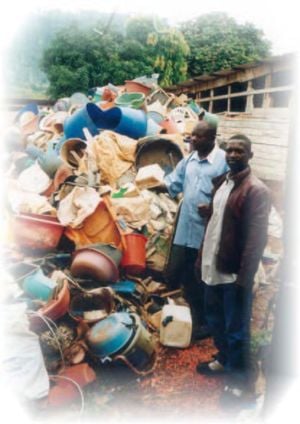
This is the table of contents of the Plastics recovery manual, made by ISF-IAI.
Table of Contents[edit | edit source]
- Chapter 1: Purpose of the guide
- Why recycle plastic waste?
- To whom is this guide adressed ?
- Chapter 2: Plastics
- What are plastics ?
- Polymers
- Plastics
- Plastic objects
- Plastic waste
- How to identify plastics ?
- General criteria
- Marking systems
- Shaping marks
- Fingernail scratching (hardness test)
- Flame test
- Density test
- Specific tests for confirmation
- What are plastics ?
- Chapter 3: Collection
- Sources of waste
- Industrial waste
- Commercial waste
- Agricultural waste
- Municipal waste
- Evaluation of a deposit
- Choosing a prospecting area
- Characteristics of the studied area
- Inventory of waste plastics sources
- Characteristics of collected waste
- Collection systems
- Sensibilization
- Selective collection systems
- Sources of waste
- Chapter 4: The physical preparation of plastics
- What is physical preparation ?
- Placement of the recycling center
- Sorting
- Why sorting ?
- How to sort ?
- Implementing the sorting
- The washing and drying
- Decontamination
- Washing
- Drying
- Downsizing
- Pre-cutting
- Crushing
- Chapter 5: The shaping of plastics
- What techniques are available ?
- Granulation
- The extruder
- The cooling system
- The granulator
- The extrusion
- Profile extrusion
- Blow molding (hollow bodies)
- Calendering extrusion (sheets, plates)
- Inflation extrusion (films)
- The injection molding
- General
- Injection plunger presses (injection-transfer)
- Injection screw presses
- Chapter 6: Economic Considerations
- Costs of recycling
- The purchase of plastics
- Investment costs
- Treatment costs
- Opportunities
- Inventory of market opportunities
- Sale of recycled plastics
- Costs of recycling
- Chapter 7: Ecology and safety
- Environmental problems
- Hygiene problems related to waste
- Chemicals
- Air pollution
- Noise
- Work safety
- Quality of endproducts from recycling
- Environmental problems
- Chapter 8: Appendixes
